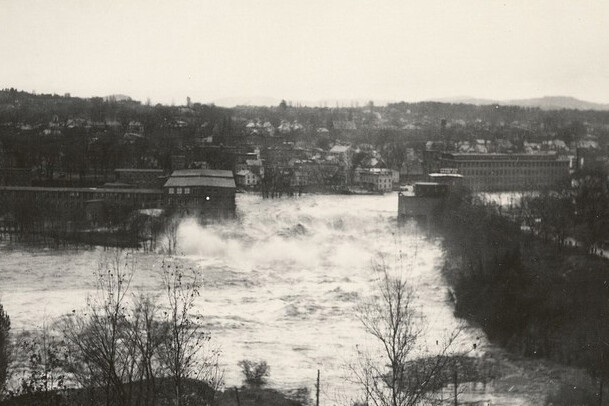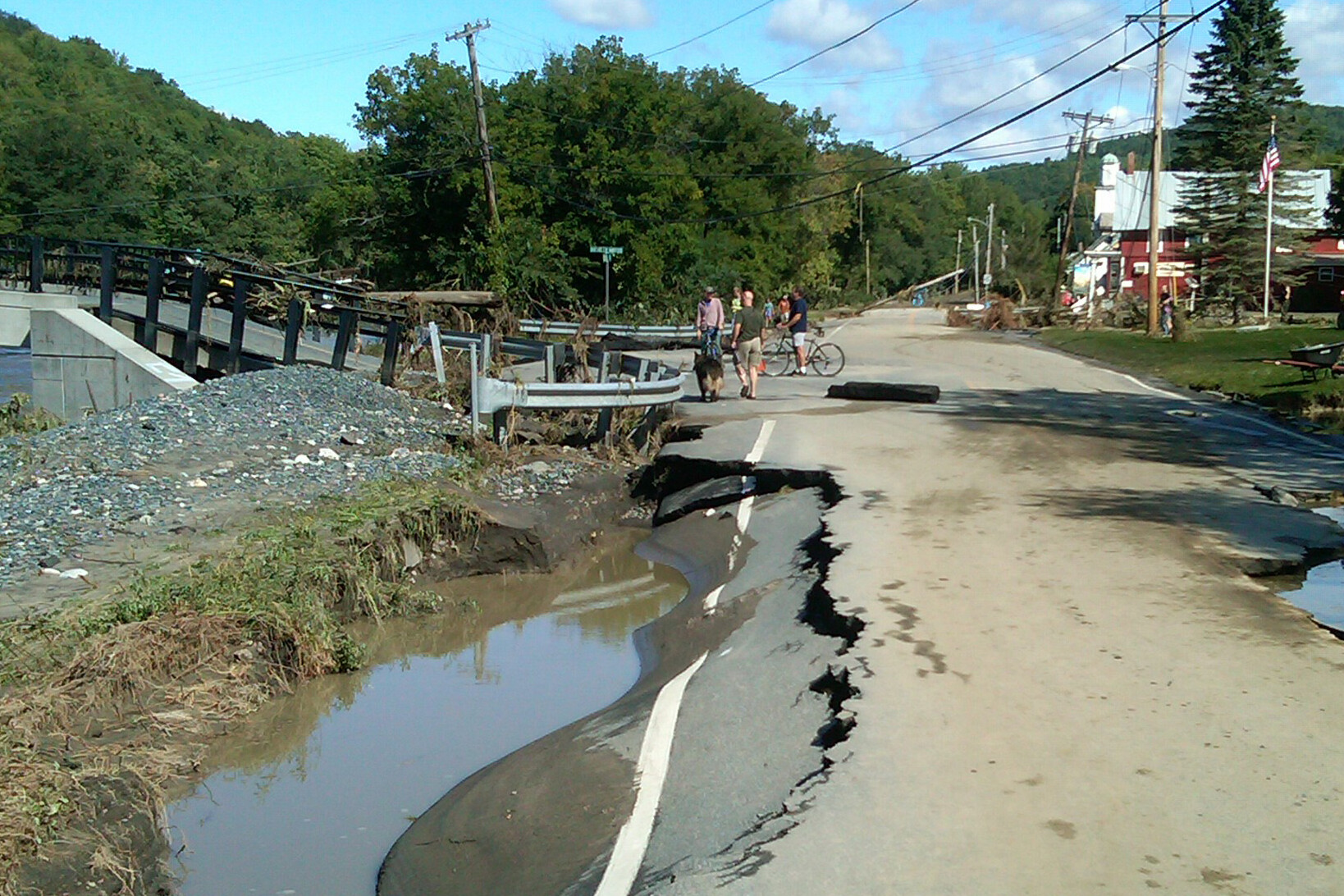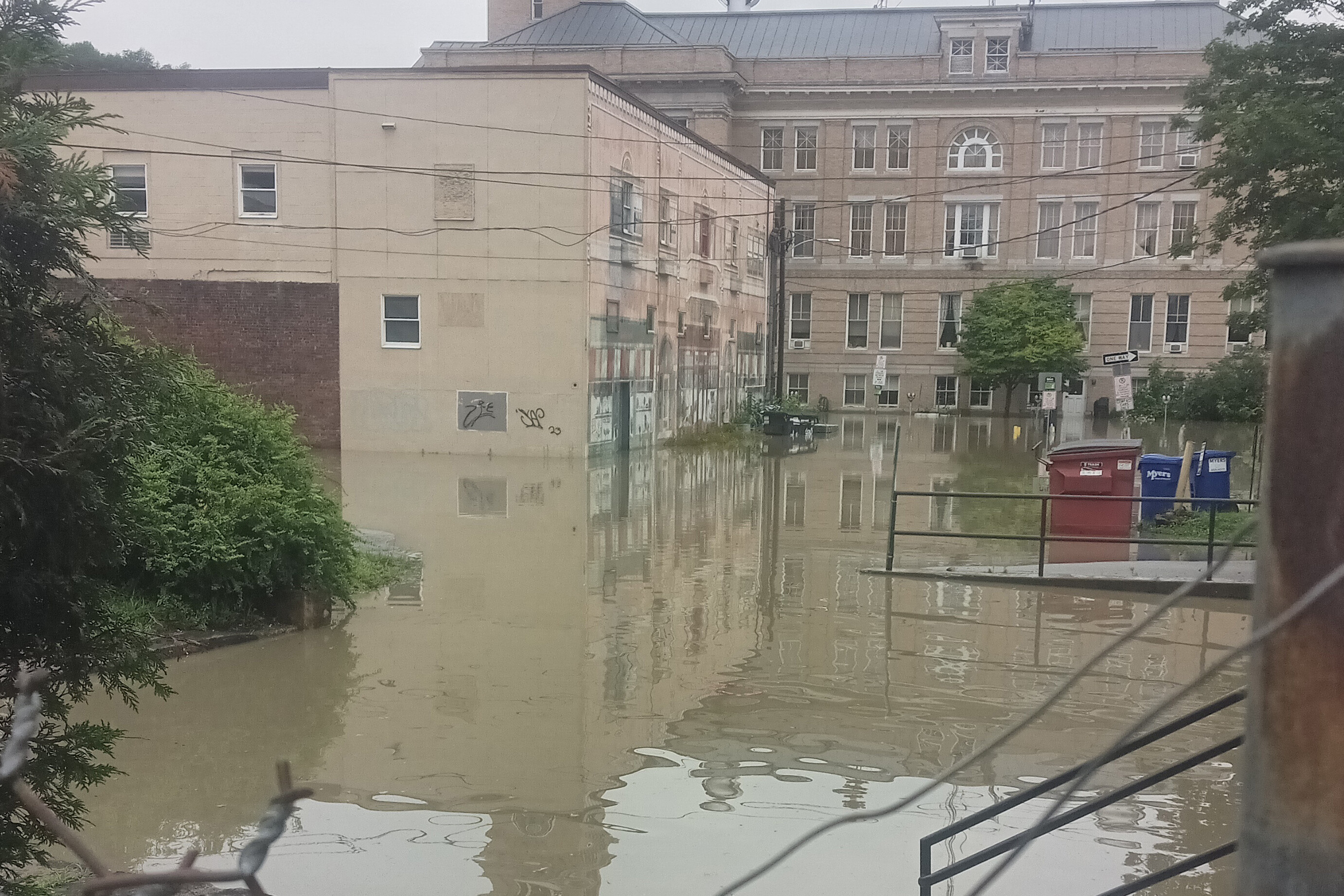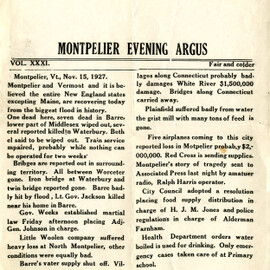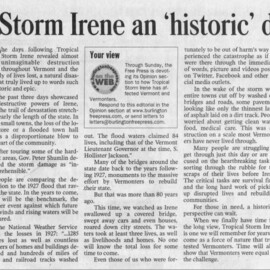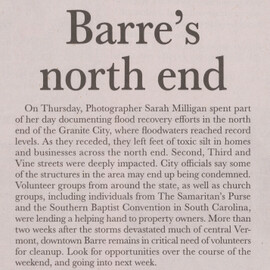Vermont Flood Disasters
How did historic flooding events affect Vermont over time?
In November 1927, Vermont experienced the most destructive(causing great damage) natural disaster in its history. In 1927, large amounts of rain fell in the summer and fall. That November, heavy rain hit again. This caused the streams to overflow with excess(too much) water. The water rushed into cities and towns across the state. Many homes, farms, and roads were destroyed. Vermonters lost their lives as well. A plaque stands on the Vermont State House Lawn in Montpelier. It shows the water level the capital suffered during the flood.
Vermonters thought that the 1927 flood was a once in a century event. In 2011, Tropical Storm Irene struck Vermont in some areas even worse than the Flood of 1927. Irene began as a hurricane(a powerful storm with very strong winds and heavy rain), bringing high winds and heavy rain into the state. The flooding separated entire towns from one another. The town of Cavendish needed rescue teams to fly into the area on helicopters to bring aid(help) to the Vermonters trapped in their homes.
Almost 12 years later Vermont suffered yet another flood. In July 2023, Vermont had a lot of rain. The ground was saturated(to become thoroughly soaked with liquid so that no more can be absorbed) from rain that fell earlier in the month. Like the earlier floods in Vermont history, the rivers could not hold any more water. People could not get out of their homes or businesses. Rescue teams had to help them escape. Many people brought their own kayaks from home to help in flooded areas.
Vermont has experienced over 20 floods in the past 200 years. Vermont cities are built in valleys(the low area between hills and mountains). When rain falls in the state, the water runs down the sides of mountains. When the rain becomes too much, it goes right into towns! Precautions(a measure taken in advance to prevent something dangerous) are in place to protect Vermont towns from flooding. Vermont has built dams(a barrier that holds back water) and culverts(a tunnel carrying a stream under a road or railroad) to stop water from entering where people live. The precautions taken after Irene and other floods protected Vermonters.
How did the reporting of the floods compare?
Thinking About History
Historians ask questions to think deeply about history.
Flooding can happen anywhere in the world, but some locations get more water than others. Other than dams, how else do you think places have learned to adapt to various bodies of water?
Flooding causes massive damage to both infrastructure and the environment. How do you think cities rebuild after events like this?
Learn More
Follow the links below to explore related topics.
Learn more about the Flood of 1927
Learn More about Tropical Storm Irene
Explore the Flood of 2023 Archive
Explore the 1927 Flood in Vermont Archive
Copy and paste this citation to show where you did your research.
Vermont Historical Society. "Vermont Flood Disasters." Vermont History Explorer. Accessed December 18, 2025. https://vermonthistoryexplorer.org/vermont-flood-disasters
